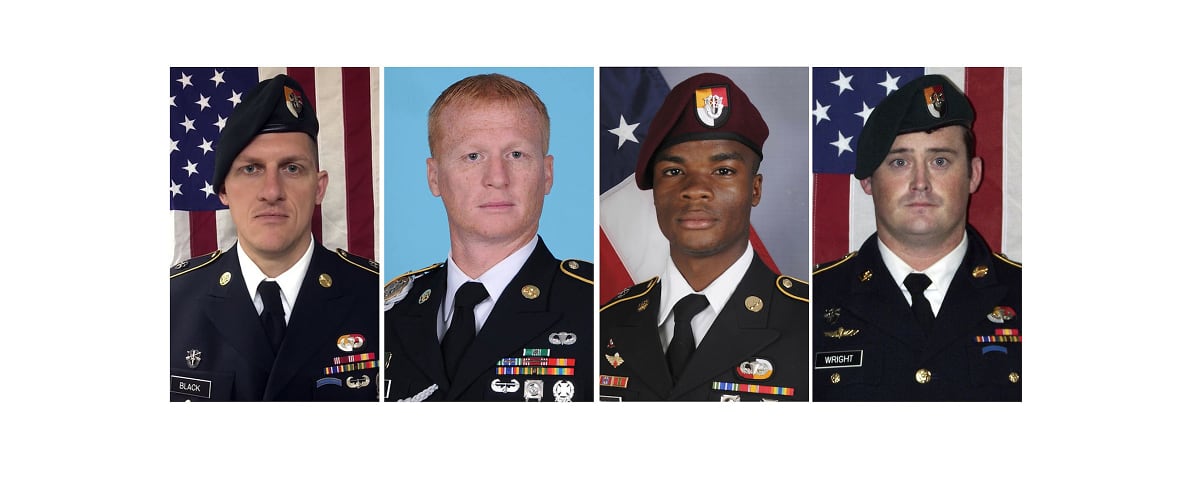WASHINGTON — U.S. Special Operations Command is bullish at the prospect of buying a light-attack aircraft, according to the command’s top leaders — a marked contrast from the U.S. Air Force, which wants to expand the effort to other types of platforms.
The Air Force this year postponed a competition to provide light-attack aircraft. The service had evaluated offerings in 2017 and was set to release a request for proposals at the end of 2018.
The plan now is to continue with experimentation and broaden the scope of a possible program that might include rotorcraft, fixed-wing and unmanned options.
But while the Air Force considers whether it needs a light-attack capability, SOCOM Commander Gen. Richard Clarke said a light-attack platform is essential for its forces and the mission it serves.
“Light attack is a need for SOCOM, and I think it’s a need for our nation,” Clarke said during a House Intelligence and Emerging Threats and Capabilities Subcommittee hearing in April.
“One, it will help our special operators on the ground for identification and protection from all our enemy forces,” he said. “Second reason, as we look at the foreign internal defense of other nations, there are many nations that are now developing their own air forces, and in many cases they are light attack.”
Special operators train foreign militaries as one of its central missions, particularly to counter terrorism.
“The most cost-effective [counterterrorism] effort is the one done by our partners and allies if we can help them be successful, and many of them simply don’t have the resources to put into fifth-generation fighters,” Mark Mitchell, principal deputy assistant secretary of defense for special operations and low-intensity conflict, said at the hearing. “From our strategic perspective, we think the flight hours for those fifth-generation fighters are best spent preparing and deterring our near-peer competitors.”
Air Force leaders are more tentative about the need for a light-attack capability. While Air Force Chief of Staff Gen. David Goldfein has spoken about how a light-attack plane would allow the service to accomplish low-end missions more cheaply, he’s also said the service won’t divert funds from priorities like the F-35 Joint Strike Fighter, B-21 bomber or KC-46 tanker to pay for a light-attack program.
He has also said the Air Force’s experimentation campaign must be expanded to accommodate the needs of allies and partner nations who might benefit from a light-attack capability — as well as greater interoperability with the United States.
"What is the right mix and how do we bring allies and partners in right now with us — not just periodically parachute in — but how do we expand this experiment to bring them into the tent with us?” Goldfein told Defense News in January.
Over the next several years, the Air Force plans to buy a small number of light-attack aircraft and deploy them to Nellis Air Force Base, Nevada — where Red Flag and a number of other high-profile training exercises take place — and Hurlburt Field, Florida, the home of Air Force Special Operations Command.
Earlier this month, the service released a presolicitation stating its intent to buy two to three A-29s from Sierra Nevada Corp. and Embraer by the end of the fiscal year. It plans to make a similar procurement of Textron’s AT-6 during the same time frame, an Air Force spokeswoman said.
However, it doesn’t plan to start a light-attack program of record until at least 2022.
Several lawmakers seem intent on preventing the Air Force from walking back on bringing additional light-attack capabilities online.
“It is my position there’s still a need for it though because F-35, F-22s are high-end,” Nebraska Republican Rep. Don Bacon said. “We need something [in a] permissive environment that’s cheaper to operate and more efficient to operate.”
And Rep. Michael Waltz, R-Fla., said: “While we, of course, as a nation need things that fly far, fast and high, we need things that fly low, armored, and can loiter and can land in places like West Africa.”
RELATED

Waltz said he will continue to press the Air Force on the capability because “we need it now."
Mitchell added he was “hopeful” that SOCOM and the Air Force can come up with a “suitable solution.”
While he didn’t have specifics related to a possible program, Clarke said SOCOM will work with the Air Force and Goldfein “to look at the timing and the mix and where we go forward with that.”
Jen Judson is an award-winning journalist covering land warfare for Defense News. She has also worked for Politico and Inside Defense. She holds a Master of Science degree in journalism from Boston University and a Bachelor of Arts degree from Kenyon College.
Valerie Insinna is Defense News' air warfare reporter. She previously worked the Navy/congressional beats for Defense Daily, which followed almost three years as a staff writer for National Defense Magazine. Prior to that, she worked as an editorial assistant for the Tokyo Shimbun’s Washington bureau.








